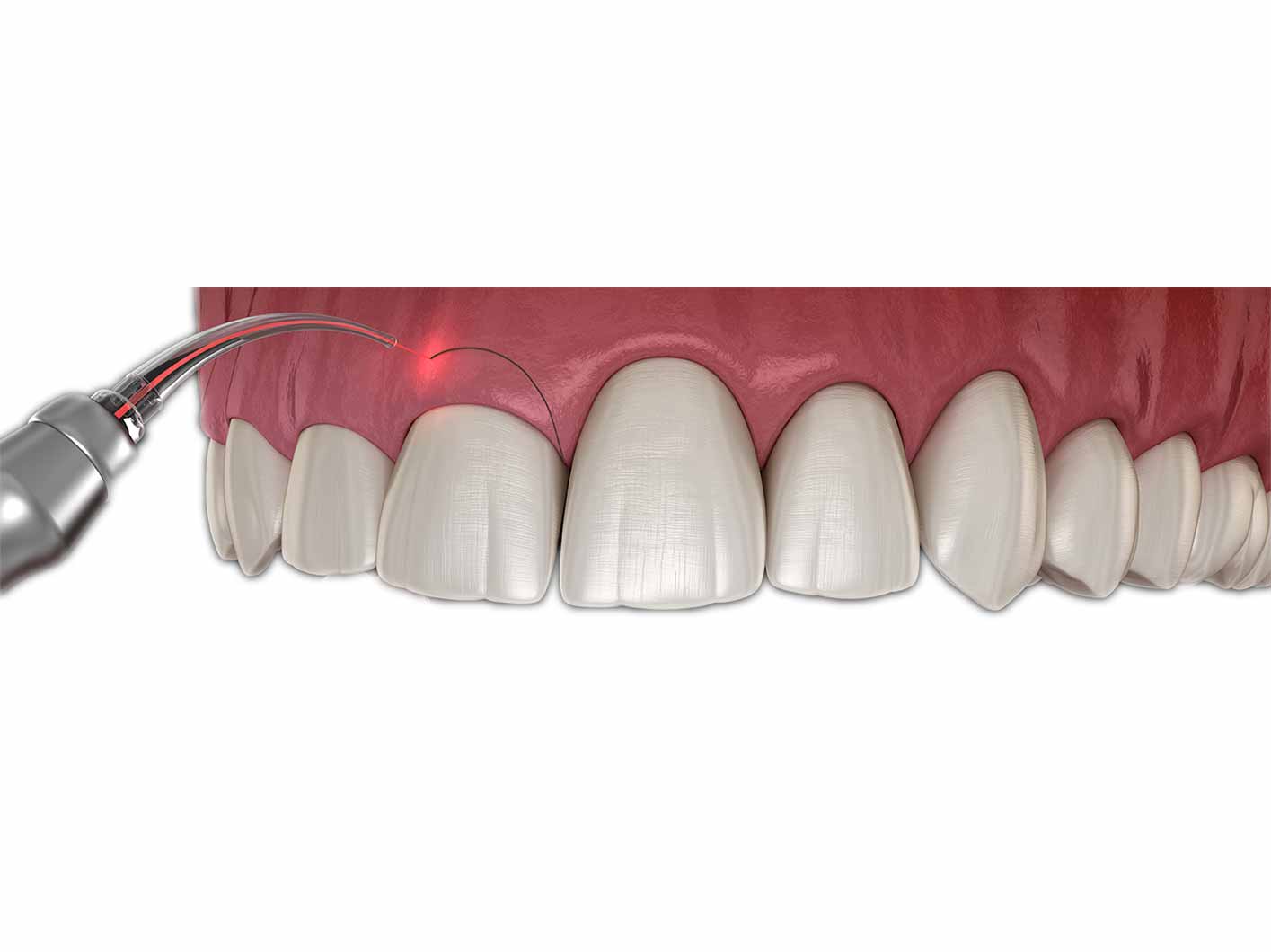
Gingivectomy is a surgical procedure involving the removal of gum tissue. It is performed to address excess gum tissue or aesthetic concerns, aiming to correct the gum level or reveal more of the tooth’s surface. The procedure is carried out under local anesthesia, and the gum tissue is shaped to achieve the desired appearance. The recovery process is generally quick, resulting in a more aesthetic smile.
Gingivectomy is typically used in the following cases:
- Correction of Gum Tissues: Sometimes, teeth may appear covered with excess gum tissue, leading to a condition known as a “gummy smile.” Gingivectomy involves the removal of excess gum tissue, allowing the teeth to achieve a more aesthetic and proportionate appearance.
- Correction of Gum Recession: Gum recession occurs when the gum line recedes, exposing the tooth roots. Gingivectomy can assist in correcting the gum tissue to cover the tooth roots adequately.
- Treatment of Gum Diseases: Certain gum diseases can lead to inflammation and recession of the gum tissue. Gingivectomy may be used to remove diseased tissue and reshape healthy gum tissue in the treatment of gum diseases.
The gingivectomy procedure is typically performed under local anesthesia. The dentist carefully removes excess gum tissue and reshapes the gum line to achieve the desired outcome. Following treatment, the gum tissue heals, often resulting in a more aesthetic appearance.
Gingivectomy is an effective option for the aesthetic and functional correction of gum tissues. However, the suitability and form of treatment are evaluated and determined by your dentist based on your specific needs. If you have concerns regarding your gum tissues, consulting with your dentist can help determine the most suitable treatment plan for you.

